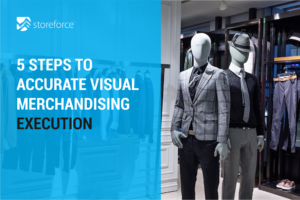Blog Post
Unified Commerce: Specialty Retail’s Top 3 Best Practices
February 21, 2018 in Thought Leadership, Unified Commerce

Despite declining traffic, the brick and mortar Store is still Retail’s most important touchpoint. Customers need a place to visualize and spend time with a brand. They want interaction with Sales Associates and the feel of your product between their fingers to cement their loyalty and build confidence for online shopping.
Unified Commerce, like any disruptive idea, has changed the definition of the word “Store”. Consumers don’t see a bricks-and-mortar and online business as separate entities. To them, it’s a single brand – one that should be consistent instore and online. Looking within our own client base, we’ve identified the ‘Top 3’ industry best practices for managing some of Retail’s most compelling Unified Commerce issues.
Top 3 Industry Best Practices for Managing Some of Retail’s Most Compelling Unified Commerce Issues
1. Measure the Problem
Thinking of Stores as ‘Markets’ can help tackle many of the eCommerce issues that affect Store operations. While customers are happy to transact online, they also enjoy physically picking up or returning their purchases instore.
Thinking of your store as a market, based on geolocation with multiple sales views for each location is step one. Step two, arm management with the ability to track sales and return metrics for each view. This puts them in the driver’s seat with the ability to proactively make informed decisions to take advantage of performance opportunities in-market and online. Successful Unified Commerce demands sales performance technology to allow both DMs and corporate leaders to embrace this vision.
2. It’s Important to Align Goals
While online sales burn up the charts with annual double-digit growth, declining traffic in-store makes it important to align goals to drive performance.
Declining traffic isn’t telling the real story; an out-of-date POS system isn’t going to separate the metrics on returns between online and instore. It was one thing when eCommerce sales were 1-5% of overall sales, but in 2018, those online returns have an impact on a Store’s bottom line. That inability to track online returns hits the Store managers where it hurts most – their bonuses.
The ability to break the data down gives the Retailer the opportunity to understand the impact and relevance of the Unified Commerce change.
3. Get Your Associate Hours Really Working for You
Can you scale your labor based on Unified Commerce trends?
It’s easy to think that the Store who receives the largest number of returns has the greatest need for additional workforce hours. The right sales performance system such as WFM+ can improve decision-making by calculating their Store’s Available Capacity – an efficient way to estimate the amount of general tasking (including processing click & collect or online returns) that can be handled within the existing labor budget. Measuring the volume of click and collect, or online instore return transactions can effectively sort which Stores need additional hours versus those with available tasking hours.
Retailers are recognizing that their Stores can play an essential role in their Unified Commerce strategies. As Unified Commerce continues to evolve, so too will the role of the Store. Dealing with the different facets of this change, while measuring the problem and aligning goals will help everyone successfully navigate the journey, improve performance while boosting sales.
Recent Blog Posts

Retail – A marathon with checkpoints
Treat success in RETAIL like you are running a marathon It is challenging but doable Look at this blog like a race Throughout the race, there are different checkpoints Each checkpoint is an...
WEITERLESEN
Five Steps to Accurate Visual Merchandising Execution
Consumers may believe they are purchasing only products, but silently, they are also purchasing the shopping experience The shopping experience is highly influenced by visual merchandising...
WEITERLESEN
Four Ways Having Robust Retail Task Management Tools Can Benefit Store Operations
Managing tasks and scheduling them down to a store level can be complex However, it is also essential in the modern retail landscape Specialty retailers around the world are turning to task...
WEITERLESENVereinbaren Sie noch heute einen Beratungstermin mit
unseren Einzelhandelsexperten
Kontaktieren Sie uns noch heute, um in einem 15-minütigen Gespräch zu besprechen, wie StoreForce Sie dabei unterstützen kann, Ihr Geschäft leistungsfähiger zu machen – und es kostet weniger als eine Transaktion pro Woche! Erfahren Sie, wie Einzelhändler auf der ganzen Welt ihre Leistung und das Kundenerlebnis mit unserer exklusiv für den Fachhandel entwickelten Lösung steigern.